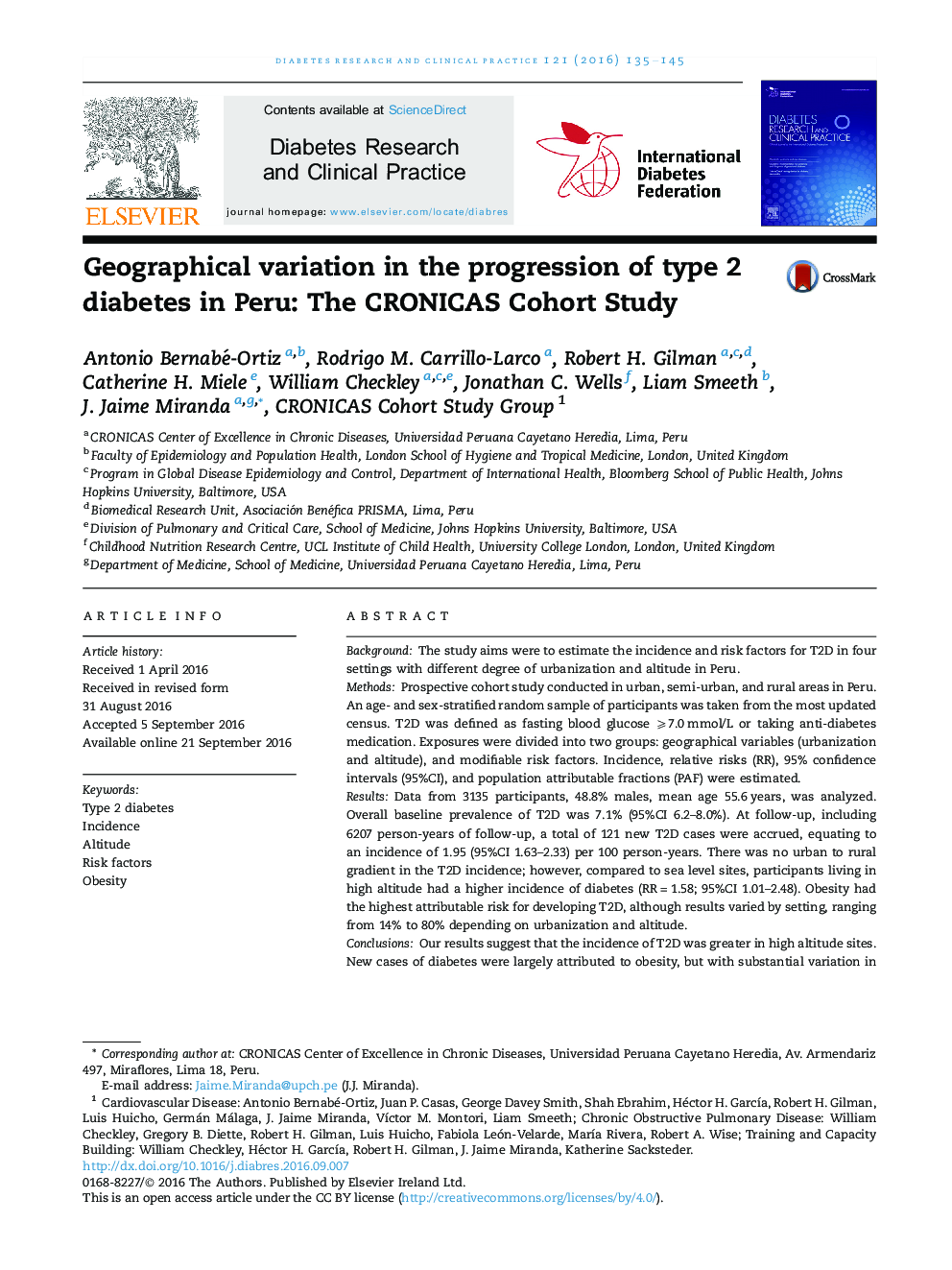| کد مقاله | کد نشریه | سال انتشار | مقاله انگلیسی | نسخه تمام متن |
|---|---|---|---|---|
| 5898708 | 1568794 | 2016 | 11 صفحه PDF | دانلود رایگان |

- The incidence of type 2 diabetes in the Latin American region is poorly defined.
- There was no evidence that urbanization altered the incidence of diabetes.
- High altitude sites were found to have a higher risk of developing diabetes.
- Obesity, varying across settings, had the highest attributable risk for diabetes.
- This study improves the understanding of diabetes burden and identifies hotspots.
BackgroundThe study aims were to estimate the incidence and risk factors for T2D in four settings with different degree of urbanization and altitude in Peru.MethodsProspective cohort study conducted in urban, semi-urban, and rural areas in Peru. An age- and sex-stratified random sample of participants was taken from the most updated census. T2D was defined as fasting blood glucose ⩾7.0 mmol/L or taking anti-diabetes medication. Exposures were divided into two groups: geographical variables (urbanization and altitude), and modifiable risk factors. Incidence, relative risks (RR), 95% confidence intervals (95%CI), and population attributable fractions (PAF) were estimated.ResultsData from 3135 participants, 48.8% males, mean age 55.6 years, was analyzed. Overall baseline prevalence of T2D was 7.1% (95%CI 6.2-8.0%). At follow-up, including 6207 person-years of follow-up, a total of 121 new T2D cases were accrued, equating to an incidence of 1.95 (95%CI 1.63-2.33) per 100 person-years. There was no urban to rural gradient in the T2D incidence; however, compared to sea level sites, participants living in high altitude had a higher incidence of diabetes (RR = 1.58; 95%CI 1.01-2.48). Obesity had the highest attributable risk for developing T2D, although results varied by setting, ranging from 14% to 80% depending on urbanization and altitude.ConclusionsOur results suggest that the incidence of T2D was greater in high altitude sites. New cases of diabetes were largely attributed to obesity, but with substantial variation in the contribution of obesity depending on the environment. These findings can inform appropriate context-specific strategies to reduce the incidence of diabetes.
Journal: Diabetes Research and Clinical Practice - Volume 121, November 2016, Pages 135-145